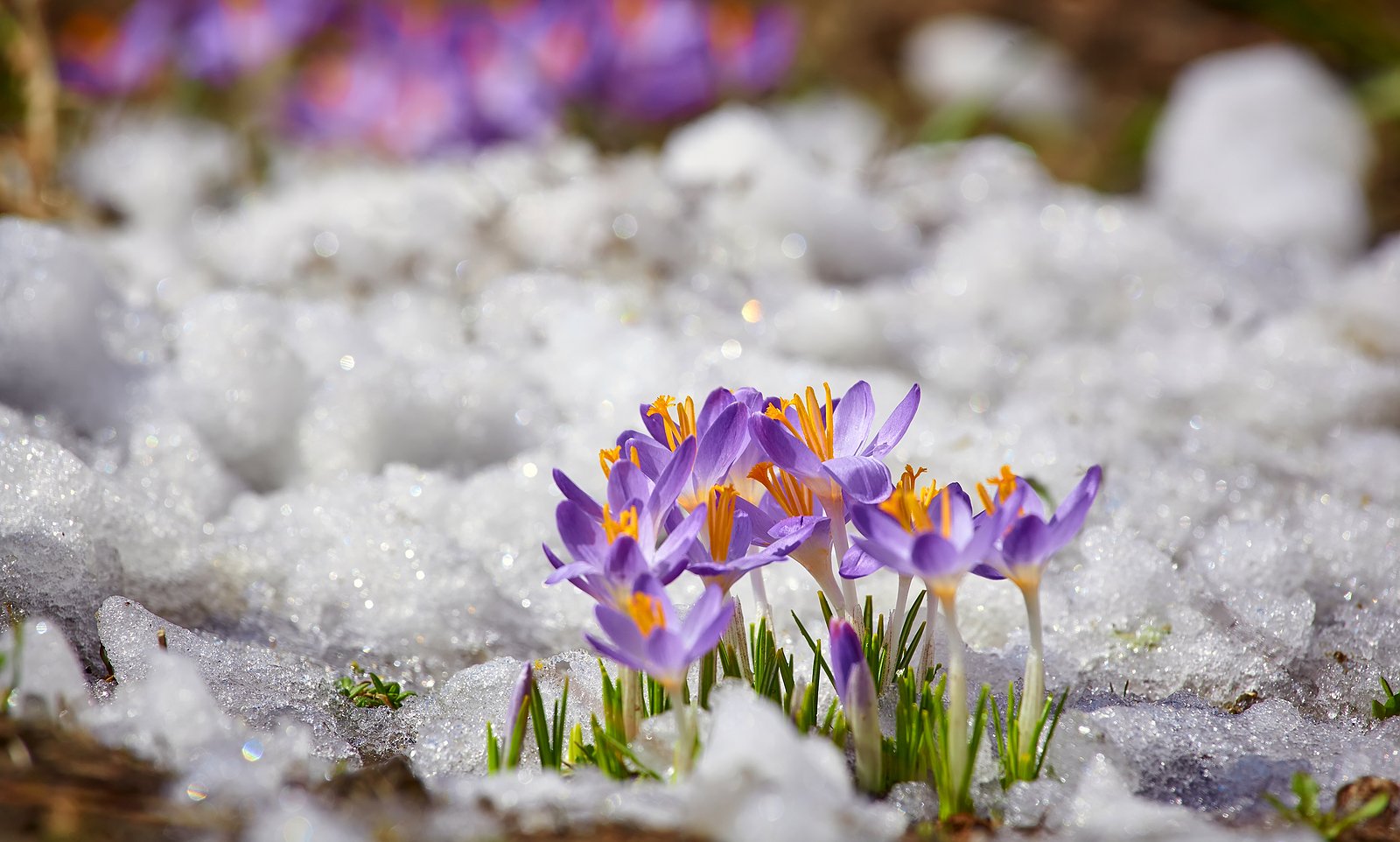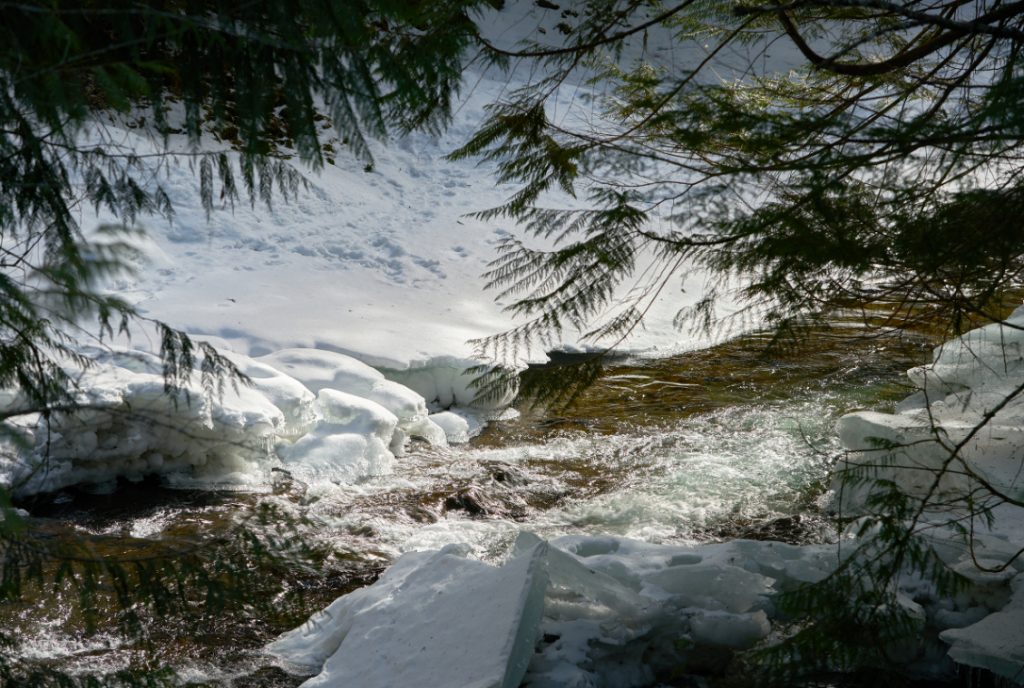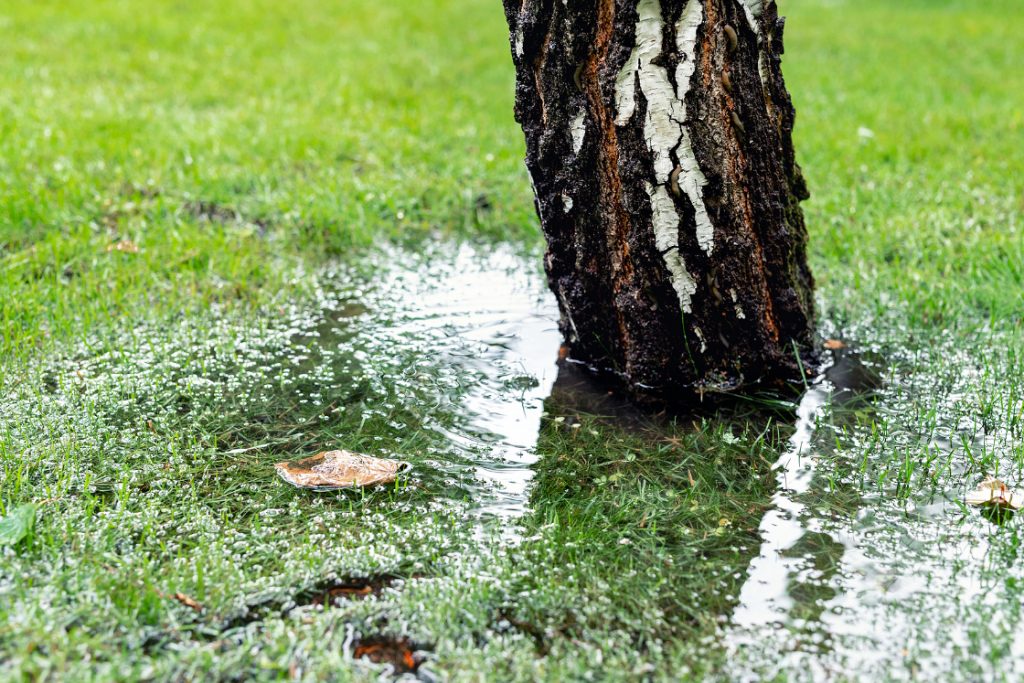
Flooding Preparedness Checklist: 9 Tips For Utah’s Flood Season
“We can’t tell exactly where or when it will flood, we don’t know until it’s starting to happen. So people need to be prepared” says Wade Mathews, public information officer for the Utah Division of Emergency Management. If that’s the case, especially in wet winters, homeowners need to consider how they can prepare their homes and yards for spring flooding. It can feel overwhelming, but with a little preparation and information, and maybe professional landscaping help, you can feel ready for Utah’s wild spring weather.
Understanding Flood Risks
Utah is a semi-arid desert, and when you hear desert you likely don’t think “flood”. However, Utah is also high in elevation and gets plenty of snow, especially in years like 2023 (or 1983 when you could kayak through skyscraper-lined streets in downtown Salt Lake due to flooding).
With so much extra snow, dense soil that may be too compacted to absorb water, and rapidly rising temperatures, a healthy dose of awareness regarding how to prepare and recover from a flood is crucial for Utah citizens.
TRENDING: 5 Ways Landscaping Saves Your From Flooding
Even if you don’t live near a creek bed or stream, depending on the weather you could still experience flooding in your yard and home. The old saying “an ounce of prevention is worth a pound of cure” definitely applies to springtime flooding in Utah, and we’re here to help you get as prepared as you can be for a flood.

Preparing Your Yard for Flooding: Flood Preparedness Checklist
There are plenty of tips to help prepare your yard for flooding, but here are our top nine tips to help you prepare for flooding in Utah.
1. Gather Sandbags
Adding sandbags to your shopping list, or locating free sandbags, is a great way to ensure your window wells, home foundation, and other structures are protected from flooding.
2. Pull Out Your Sump Pumps
Sump pumps are especially helpful in lower elevation spots of your yard, including the bottom of slopes or hills or the top of your pool cover.
3. Look For Settling Soil In Your Yard
Check your yard for any signs that soil is settling, because that settled soil could mean that as it compacts, it won’t be able to absorb water. If the soil can’t absorb water, that water will spill into other areas it isn’t meant to be.
4. Gather Supplies
In all likelihood, your home won’t be underwater during a flood. However, you might lose power or your basement may flood, both of which might lead you to temporarily leave your home. Gather some basic supplies you might need in case you lose power or need to spend a night away from home.
5. Remove Important Items From Flood Risk Areas
Whether it’s your favorite garden gnome in your flower beds or your important documents in your basement office, make sure to gather important or meaningful objects from flood-risk areas and store them securely.
6. Check For Water Stains
Look around any structures (including your home) on your property. Note any water stains on the foundations of the structures, and then contact a professional to help you figure out if those water stains are indicative of water damage. Additionally, note any areas of your yard where soil or decorative gravel has been washed out, as that may mean you need to adjust around those areas to help mitigate the damage.
7. Downspouts And Rain Gutters
Make sure to clean out your rain gutters and downspouts so that water has a path from your roof to your lawn or another appropriate area. Pull the bottom of your downspouts away from the house and add a corrugated pipe to the end of the downspout and redirect it into the lawn far away from your home.
8. Double Check Your Flood Insurance
Make sure that your home insurance policy covers floods. If you aren’t sure, spend the time to find out, it could save you thousands of dollars down the road. If you don’t have it, add it to your policy.
9. Keep Checking For Flood Updates And Information
Once you’ve done the hard work of preparing for a flood, continue to check with local resources regarding any flood activity in your area.
The Impact Of Flooding On Your Yard
When you think of yard flooding, you might think standing water is the only problem. While standing water certainly does pose problems for your yard (root rot, algae growth, etc), it’s not the only impact flooding has on your Utah yard. Soil erosion due to flooding takes the topsoil, the nutrient-rich soil needed for plant growth, and removes it from your yard, leaving you with less-than-ideal dirt to plant your garden.
Flooding can also damage your plants and trees, not only by soaking the roots to the point of killing the plant but by spreading diseases from plant to plant. And with all the extra water comes more pests like flies, mosquitos, spiders, and more. All yard ecosystems need some of these insects, but flooding can cause too many to reproduce and wreak havoc on your yard.

Many of these problems can be mitigated with thoughtful preparation as outlined above, but nothing compares to having professional landscaping help to determine problem areas and solutions in your yard.
LEARN MORE: What Makes Big Rock The Best?
After the worst of a flood is over, check your high-risk areas first, like sloped areas, flat areas or anywhere you have seen water sitting for long periods of time. Make sure to contact your insurance company and document any damage for insurance purposes before you start to clean up. Remove any major debris, clean up any silt deposits, and then watch your yard carefully for the following weeks. What areas need fertilization? What areas need aeration? Did any of your trees or plants suffer too much damage and need to be removed? Post-flood landscape cleanup is no small feat, and if you had a particularly bad flood, you might need to call in a professional landscape team to help you come up with a plan to restore your yard to its previous condition.
Give Yourself Peace Of Mind With A Little Preparation
As Utahns, we aren’t always prepared for flooding the way we are prepared for drought, but that doesn’t mean we can’t take reasonable steps to prevent lasting flood damage to our landscapes. With a little preparation, you can mitigate some of the negative effects of flooding in your yard, and you can start the prep today to ensure you don’t have to deal with a headache later. If you aren’t sure where to start or you are concerned that you may have a particularly flood-prone yard, we are here to help. Contact us today to find out how we can ensure your yard is ready for Utah’s spring runoff.


Leave a Reply
You must be logged in to post a comment.